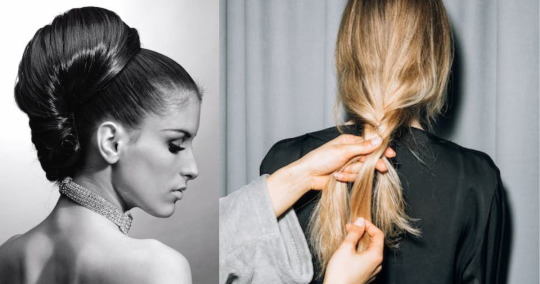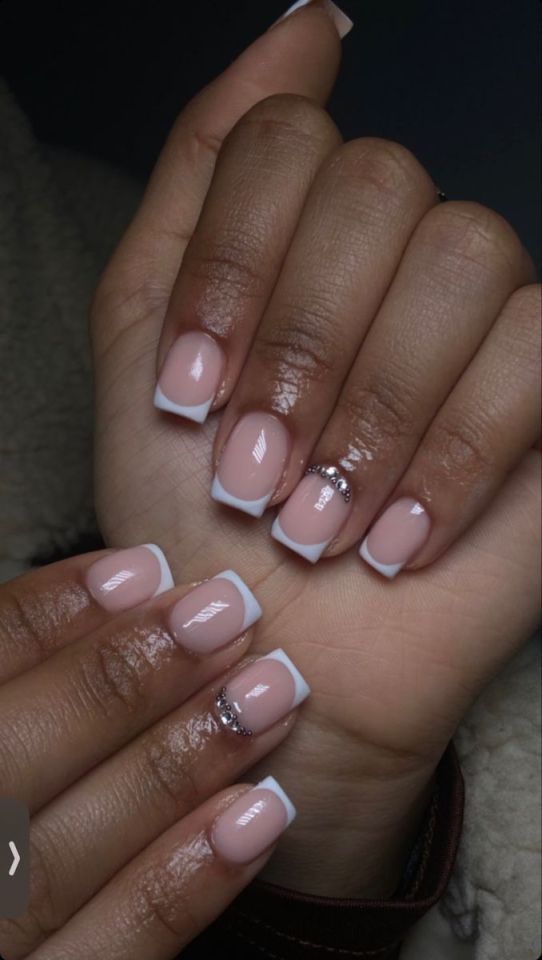#Women Tips
Text
How the Reset Your Life
21 notes
·
View notes
Text
Women Tips : महिलाएं लूज ब्रेस्ट को ऐसे बनाए सुडौल, अपनाए ये टिप्स
Women Tips : स्तन विभिन्न मांसपेशियों और कोशिकाओं से बने होते हैं। जो उम्र के साथ सिकुड़ने लगते है। स्तनों के सिकुड़ने के कारण वह ढीले हो जाते हैं। यह एक प्राकृतिक प्रक्रिया है। जो 50 साल की उम्र के महिलाओं के साथ ज्यादा दिखता है। लेकिन यह भी देखा गया है कि कई महिलाएं कम उम्र की होती हैं तो उनके स्तन भी ढीले और लूज होने लगते हैं। ऐसे में उनकी खूबसूरती पर दाग लग जाता है। अगर आपके साथ भी ऐसा हो रहा है तो आप परेशान ना हो अगर आप अपने स्तन को सही आकार देना चाहते हैं तो आप इन तरीकों को आजमा सकते हैं इससे आप खूबसूरत दिखेंगे और आपके स्तन सुडौल हो जाएंगे।
1 note
·
View note
Text
"Hair Free Hair Grow" Tips: How is fenugreek useful for hair growth?
Since we are giving more importance in hair care nowadays, we think that the hair should grow well (Hair Free Hair Grow) and it should be strong. Such fenugreek seeds are used externally rather than internally to promote hair growth.
The "nicotinic acid" present in these fenugreek dilates the blood vessels of the hair follicles.
Due to this, the blood vessels near the hair follicles are dilated so that the blood circulation reaches the hair. In this way, the blood flow to the hair follicles will provide many types of nutrients like vitamin A, vitamin E and iron.
Also, lecithin present in fenugreek protects the skin on the head from dehydrating, so the hair on the head does not fall off or break. This substance called lecithin keeps the scalp hydrated.
Too much exposure to the sun can deplete the body's water content and lead to dehydration. This causes the skin to become dry and the hair on the head to break or fall out.
At such a time, lecithin present in fenugreek hydrates the skin without drying it out. This homemade fenugreek gel is scientifically proven to provide such benefits. It was proved in 1972 by "University of Paris", France.
In this way, there is no doubt that fenugreek is very useful in providing nutrients to the hair follicles and skin by improving blood circulation without any side effects at a low cost.
Fenugreek is a herb used in cooking and has various health benefits, although it is most commonly used to promote hair growth. If you're looking to promote hair growth, consider these simple tips along with fenugreek.

#hair care#hair free hair grow#hair free hair grow tips#hair growth#hair growth tips#women tips#beauty tips#hairy#long hair#red hair#hairstyle#gay hairy#forsolution.xyz
1 note
·
View note
Text
Yay, I finally have the life-insurance money! I'm rich (not enough to buy a car, but I'm so broke that a month worth of wage is already rich for my standards, so I feel like a billionaire)!! 5y after my father killed himself, no less.
I received in June a letter telling me that I'd tangibly get money after years of being harrassed and telling the insurance company I didn't want anything from my father and couldn't say which doctor he was with at random dates and what for. I didn't pay attention to this letter in June, until the mother of my half-brothers called me to tell me essentially "Girlie, these assholes owe you money, rob capitalism blind! That's the least your jerk of a father can do for you!" (she was right), so I gave the insurance company my bank infos the 5th of September. I still hadn't received shit last week, so my Mission Locale councillor told me to spam them and rob them blind as well and send him a copy of my email. So I sent him that. He said I needed to be more aggressive and provided an example. Which would have sounded rude imo, but I slightly edited it and sent it and guess what? I received it day for day a week later. I must say that my brothers received the money like, a month ago already, when they sent their infos after me.
What I'm getting from that is : sometimes you need to assertively be somewhat an asshole in your emails, because men do that and get what they want without thinking. And if people know you're female, they won't take you seriously and will conveniently lose your file or forget about you or have an informatic bug. If people owe you money, don't politely remind them and ask for it, demand it and threaten to take legal action if you don't get it in the following weeks.
Women are mocked for being "Karens" but that's because assertive women are scary and get what they want.
#radblr#radical feminism#smash the patriarchy#women tips#women supporting women#women deserve better#life tips#life hacks#money#self worth#self esteem#female socialization
1 note
·
View note
Text

all RIGHT:
Why You're Writing Medieval (and Medieval-Coded) Women Wrong: A RANT
(Or, For the Love of God, People, Stop Pretending Victorian Style Gender Roles Applied to All of History)
This is a problem I see alllll over the place - I'll be reading a medieval-coded book and the women will be told they aren't allowed to fight or learn or work, that they are only supposed to get married, keep house and have babies, &c &c.
If I point this out ppl will be like "yes but there was misogyny back then! women were treated terribly!" and OK. Stop right there.
By & large, what we as a culture think of as misogyny & patriarchy is the expression prevalent in Victorian times - not medieval. (And NO, this is not me blaming Victorians for their theme park version of "medieval history". This is me blaming 21st century people for being ignorant & refusing to do their homework).
Yes, there was misogyny in medieval times, but 1) in many ways it was actually markedly less severe than Victorian misogyny, tyvm - and 2) it was of a quite different type. (Disclaimer: I am speaking specifically of Frankish, Western European medieval women rather than those in other parts of the world. This applies to a lesser extent in Byzantium and I am still learning about women in the medieval Islamic world.)
So, here are the 2 vital things to remember about women when writing medieval or medieval-coded societies
FIRST. Where in Victorian times the primary axes of prejudice were gender and race - so that a male labourer had more rights than a female of the higher classes, and a middle class white man would be treated with more respect than an African or Indian dignitary - In medieval times, the primary axis of prejudice was, overwhelmingly, class. Thus, Frankish crusader knights arguably felt more solidarity with their Muslim opponents of knightly status, than they did their own peasants. Faith and age were also medieval axes of prejudice - children and young people were exploited ruthlessly, sent into war or marriage at 15 (boys) or 12 (girls). Gender was less important.
What this meant was that a medieval woman could expect - indeed demand - to be treated more or less the same way the men of her class were. Where no ancient legal obstacle existed, such as Salic law, a king's daughter could and did expect to rule, even after marriage.
Women of the knightly class could & did arm & fight - something that required a MASSIVE outlay of money, which was obviously at their discretion & disposal. See: Sichelgaita, Isabel de Conches, the unnamed women fighting in armour as knights during the Third Crusade, as recorded by Muslim chroniclers.
Tolkien's Eowyn is a great example of this medieval attitude to class trumping race: complaining that she's being told not to fight, she stresses her class: "I am of the house of Eorl & not a serving woman". She claims her rights, not as a woman, but as a member of the warrior class and the ruling family. Similarly in Renaissance Venice a doge protested the practice which saw 80% of noble women locked into convents for life: if these had been men they would have been "born to command & govern the world". Their class ought to have exempted them from discrimination on the basis of sex.
So, tip #1 for writing medieval women: remember that their class always outweighed their gender. They might be subordinate to the men within their own class, but not to those below.
SECOND. Whereas Victorians saw women's highest calling as marriage & children - the "angel in the house" ennobling & improving their men on a spiritual but rarely practical level - Medievals by contrast prized virginity/celibacy above marriage, seeing it as a way for women to transcend their sex. Often as nuns, saints, mystics; sometimes as warriors, queens, & ladies; always as businesswomen & merchants, women could & did forge their own paths in life
When Elizabeth I claimed to have "the heart & stomach of a king" & adopted the persona of the virgin queen, this was the norm she appealed to. Women could do things; they just had to prove they were Not Like Other Girls. By Elizabeth's time things were already changing: it was the Reformation that switched the ideal to marriage, & the Enlightenment that divorced femininity from reason, aggression & public life.
For more on this topic, read Katherine Hager's article "Endowed With Manly Courage: Medieval Perceptions of Women in Combat" on women who transcended gender to occupy a liminal space as warrior/virgin/saint.
So, tip #2: remember that for medieval women, wife and mother wasn't the ideal, virgin saint was the ideal. By proving yourself "not like other girls" you could gain significant autonomy & freedom.
Finally a bonus tip: if writing about medieval women, be sure to read writing on women's issues from the time so as to understand the terms in which these women spoke about & defended their ambitions. Start with Christine de Pisan.
I learned all this doing the reading for WATCHERS OF OUTREMER, my series of historical fantasy novels set in the medieval crusader states, which were dominated by strong medieval women! Book 5, THE HOUSE OF MOURNING (forthcoming 2023) will focus, to a greater extent than any other novel I've ever yet read or written, on the experience of women during the crusades - as warriors, captives, and political leaders. I can't wait to share it with you all!
#watchers of outremer#medieval history#the lady of kingdoms#the house of mourning#writing#writing fantasy#female characters#medieval women#eowyn#the lord of the rings#lotr#history#historical fiction#fantasy#writing tip#writing advice
29K notes
·
View notes
Text

If you want to see more of me, check out my Free onlyfans
#onlyf@nz#+18 or +adult only#18+ only#@na tips#sexy celebrities#sexy peachy bum 🍑#sexy pose#sexy tattoed women#sexy tease#sexy titts#sexy wives#slim and sexy#so hot and sexy#sexy ladys#sexy breast#huge titts#natural titts#big tiddy baby#huge tiddies#big tiddy gf#girls kissing girls#wet ass pussy
3K notes
·
View notes
Text

#that girl#it girl#pink pilates princess#girly blog#girly girl#high value woman#leveled up mindset#self love journey#dream girl journey#level up tips#green juice girl#women in luxury
7K notes
·
View notes
Text
Do you think you speak too fast/ too slow?


Here is what I learned from a speech coach.
warm up:
start this exercise by taking a deep breath and saying “aaaaah” - try to extend this to 30 seconds. Now if it doesn’t go till 30, that’s fine. Aim to work your way to that. If you can work it up to 30, go for 45/60 seconds. Do this 5 times.
next.
Download an app called Metronome beats. It’s basically what singers/ musicians use for beats.
Settings:
keep beats/bar as 1,
clicks/beats as 1
start at 90. It will start with a click sound and continue “beeping.”
Match your words to the beep. One beep = one word. Now slowly, increase the beat by 5 till you reach 110. Increase it at your own pace but try to spend at least 20 seconds on each number (90 for 20 seconds; 95 for 20; 100 for 20….) That’s when you stop.
either start by reading something out loud and matching the beat, or select a topic and speak freely.
do this every single day. This will help with your breath, if you’re speaking on a topic it will help you think better and improve over time. The best way to further complement this exercise is to improve your vocabulary. Try to learn 1-3 new words a day and incorporate it in your vocabulary.
This is a great tool to use when learning new languages too. You can practice your speaking skills and see how fast you can remember/ read words.
#c suite#personal growth#ceo aesthetic#powerful woman#strong women#that girl#productivity#getting your life together#balance#Speech#How to speak#speech therapy#breath work#speaking#small talk#speaking confidence#How to#giving a speech#Talking publicly#Presenting tips#presenting#speaking tips
2K notes
·
View notes
Text
Femme Fatale Guide: 15 Essential Business Skills Everyone Should Master
Articulate, confident communication
Crafting effective, compelling pitches
Operating and communicating through a solution-oriented framework
Research of all types (Google, market research, studies, polls, interpersonal conversations, etc.)
Learning how to streamline, edit, and organize information in a clear and logical way
Accumulating high-level working knowledge/proficiency in all tools and programs directly related to your type of work/industry
Budgeting and financial optimization (investment, tax benefits, etc.)
Reading and interpreting legal contracts/documents
Setting rates, boundaries, and learning when/how to delegate
Good posture, direct eye contact, and a firm handshake
Building streamlined systems for onboarding, different repeat project scopes/workflows, and KPI measuring
The art of following up, listening to (potential) clients' needs, asking thoughtful questions, and benefit-oriented salesmanship
Consistently reading, learning, and studying current events/cultural platforms/industry and field-related knowledge
How to spot customer/client/business partner red flags
Self-management, task/project prioritization, and optimization of your personal energy clock + levels
#femmefatalevibe#business tips#career advice#career path#career goals#professionalism#women business#female writers#female entrepreneurs#professional development#personal development#relationship advice#people skills#social skills#life lessons#higher self#personal growth#boundaries#self esteem#self confidence#conflict resolution#communication skills#interpersonal communication
1K notes
·
View notes
Text
Foods You Can Eat Instead of Taking Vitamins and Supplements 🍎🥥🥦🥑🍌
Vitamin A: Carrots, sweet potatoes, spinach, kale.
B Vitamins: Whole grains, meat, eggs, nuts, legumes.
Vitamin B1 (Thiamine): Whole grains, legumes, nuts, pork, fortified cereals.
Vitamin B2 (Riboflavin): Dairy products, lean meats, almonds, leafy greens.
Vitamin B3 (Niacin): Poultry, fish, nuts, legumes, whole grains.
Vitamin B5 (Pantothenic Acid): Meat, poultry, eggs, avocado, whole grains.
B6: Chicken, turkey, fish, bananas, chickpeas.
Folate (Vitamin B9): Leafy greens, legumes, citrus fruits, fortified grains.
Vitamin B12: Animal products (meat, fish, dairy), fortified plant-based foods.
Vitamin C: Citrus fruits, strawberries, bell peppers.
Vitamin D: Fatty fish (salmon, mackerel), fortified dairy products, sunlight.
Vitamin E: Sunflower seeds, almonds, vegetable oils, nuts, spinach, broccoli.
Vitamin F (Essential Fatty Acids): Fatty fish, flaxseeds, chia seeds, walnuts.
Vitamin H (Biotin): Eggs, nuts, sweet potatoes, salmon, avocado.
Vitamin K: Leafy greens (kale, spinach), broccoli, Brussels sprouts.
Vitamin K2: Fermented foods (natto, cheese), animal products, leafy greens.
Vitamin L1 (Anthranilic Acid): Cruciferous vegetables (cabbage, cauliflower), legumes.
Vitamin P (Bioflavonoids): Citrus fruits, berries, onions, green tea.
Vitamin Q (Ubiquinone): Fatty fish, organ meats, spinach, cauliflower.
Vitamin T (L-carnitine): Red meat, poultry, fish, dairy products.
Vitamin U (S-Methylmethionine): Cabbage, broccoli, Brussels sprouts.
Betaine: Beets, spinach, whole grains, seafood.
Boron: Fruits (apples, pears), legumes, nuts, avocado.
Calcium: Dairy products, leafy greens (kale, collard greens), almonds.
Carnosine: Beef, poultry, fish.
Carnitine: Red meat, dairy products, fish.
Catechins: Green tea, black tea, dark chocolate.
Choline: Eggs, liver, beef, broccoli, soybeans.
Creatine: Red meat, fish, poultry.
Chromium: Broccoli, whole grains, nuts, brewer's yeast.
Chondroitin: Cartilage-rich foods (bone broth, connective tissue of meat).
Copper: Shellfish, nuts, seeds, organ meats, lentils.
Coenzyme Q10 (CoQ10): Fatty fish, organ meats, nuts, soybean oil.
Ellagic Acid: Berries (strawberries, raspberries), pomegranates.
Glucosinolates: Cruciferous vegetables (cabbage, broccoli, cauliflower).
Glucosamine: Shellfish (shrimp, crab), bone broth, animal connective tissues.
Glutamine: Dairy products, meat, poultry, cabbage.
Inositol: Citrus fruits, beans, nuts, whole grains.
Iodine: Seafood, iodized salt, dairy products.
Iron: Red meat, poultry, beans, lentils, spinach.
L-Theanine: Mushrooms, black tea, white tea, guayusa.
Lignans: Flaxseeds, whole grains, cruciferous vegetables.
Lutein and Zeaxanthin: Leafy greens (spinach, kale), corn, eggs.
Lycopene: Tomatoes, watermelon, pink grapefruit.
Magnesium: Spinach, nuts, seeds, whole grains, beans.
Manganese: Nuts, seeds, whole grains, leafy greens, tea.
Melatonin: Cherries, grapes, tomatoes.
Omega-3 fatty acids: Flaxseeds, chia seeds, walnuts, fatty fish.
PABA (Para-Aminobenzoic Acid): Whole grains, eggs, organ meats.
Pantothenic Acid (Vitamin B5): Meat, poultry, fish, whole grains, avocado
Pectin: Apples, citrus fruits, berries, pears.
Phosphorus: Dairy products, meat, poultry, fish, nuts.
Prebiotics: Garlic, onions, leeks, asparagus, bananas (unripe), oats, apples, barley, flaxseeds, seaweed.
Probiotics: Yogurt, kefir, fermented foods (sauerkraut, kimchi).
Potassium: Bananas, oranges, potatoes, spinach, yogurt.
Polyphenols: Berries, dark chocolate, red wine, tea.
Quercetin: Apples, onions, berries, citrus fruits.
Resveratrol: Red grapes, red wine, berries, peanuts.
Rutin: Buckwheat, citrus fruits, figs, apples.
Selenium: Brazil nuts, seafood, poultry, eggs.
Silica: Whole grains, oats, brown rice, leafy greens.
Sulforaphane: Cruciferous vegetables (broccoli, Brussels sprouts), cabbage.
Taurine: Meat, seafood, dairy products.
Theanine: Green tea, black tea, certain mushrooms.
Tyrosine: Meat, fish, dairy products, nuts, seeds.
Vanadium: Mushrooms, shellfish, dill, parsley, black pepper.
Zeatin: Whole grains, legumes, nuts, seeds.
Zinc: Oysters, beef, poultry, beans, nuts, whole grains.
#women health#health and wellness#healthy diet#healthy living#healthy lifestyle#womens health#health#health tips#wellness#levelupjourney#dream girl guide#dream girl tips#dream girl journey#health is wealth#clean girl aesthetic#clean girl#it girl#nutrition#supplements#organic#food#nutrients#healthyhabits#healthy life tips#self love journey#self love#dream life#dream girl
2K notes
·
View notes
Text


Monday january 22
school is back and we are dying so :), everything feels so horrible and overwhelming but we rollin rollin rollin
🎧 - Spinnin - madison beer
📚 - no time
THINGS I NEED TO DO FOR TOMORROW
essay
assign delegations
study for math
study for chemistry
#study motivation#ib#studyspo#student#study tips#study#high school#chaotic academia#studyblr#academia#study aesthetic#studying#studyspiration#study movitation#study blog#stem#stemblr#women in stem#stem academia#stem student#maths#science education#academics#ibdp#ibd problems#international baccalaureate#ib diploma#ibdp student#paula studies
1K notes
·
View notes
Text





@bloominglegumes 's Drift and Ratchet humanformer designs because I think about them every waking second that I'm alive- They're just.. so soft it kills me ;v; <333
#last 2 panels are also just a tip for anyone doing kendo lol- got too many blisters that way...#their designs are so MRGRGFFNMGHAAAAAAAA!!!!!!!!!!!!!!! <33333 and so fun to draw ToT#ghughhhhghhh to have what they have.. sorry kfkfkdsd#I love it when wlw and women love women and women and and love.. women ;O;#transformers#mtmte#maccadam#maccadams#transformers fanart#tf idw#more than meets the eye#frootertooter archive#lost light#ratchet#idw drift#tf drift#dratchet
756 notes
·
View notes
Text
Storytelling Techniques
A good storytelling method is essential for writing good fiction. There are many storytelling techniques that can be used to create engaging and memorable stories. Here are some common techniques you can use in your stories:
Use sensory details: Including sensory details in your story can help your audience imagine the scene and get emotionally invested in the story. For example, you can describe the colors, sounds, and smells of a place or event.
Build tension and suspense: Tension and suspense are important for keeping your audience engaged and invested in your story. You can create tension by introducing a conflict or challenge that the characters must overcome.
Foreshadowing: Foreshadowing is a technique used to hint at future events in the story. This can create anticipation and keep your audience engaged.
Use pacing effectively: Pacing refers to the speed at which the story unfolds. Make sure to vary the pacing to keep your audience engaged. For example, you can slow down the pacing during emotional or reflective moments, and speed it up during action scenes.
Show, don't tell: Instead of simply telling your audience what is happening in the story, show them through vivid descriptions and actions. This can help your audience feel more immersed in the story.
Use metaphor and simile: Metaphors and similes can help create vivid descriptions and comparisons in your story. They can also help to convey complex ideas in a more accessible way.
Flashbacks and flash-forwards: Flashbacks and flash-forwards can help provide context for the story and create tension. Make sure to use them sparingly and at appropriate moments in the story.
Use humor: Humor can be a powerful tool for engaging your audience and making your story more memorable. Just make sure that the humor is appropriate for the tone and subject matter of your story.
Suspenseful chapter endings: Ending chapters on a suspenseful note can help keep your audience engaged and eager to read on.
By using these techniques and others, you can create a compelling and memorable story that will engage and entertain your audience.
If you want to read more posts about writing, please click here and give me a follow!

#creative writing#writing#writeblr#writerscommunity#writer things#writers#writersociety#on writing#writers on tumblr#women writers#writerscorner#female writers#writerblr#writblr#writing tips#writing community#write#storytelling#technical writing
2K notes
·
View notes
Text
French tips >>>




#nails#divine feminine#feminine energy#feminine#black femininity#femininity#women#soft life#feminine journey#cute nails#french tips#classy#classy nails#classy girl#classy girl era#black girl moodboard#black girl aesthetic#soft black women#classy black women#black women#black women in luxury#luxury#luxurious#luxury living#luxury lifestyle#pamper#pampered#princess#princess treatment#high maintenance
596 notes
·
View notes
Text

Strength is not just measured in weights lifted, but in the resilience of the spirit, the commitment to self-improvement, and the unwavering dedication to one's own well-being.
#fitness tips#fitness#fitnesslifestyle#fitnessmotivation#workout#gym#women fitness#fitnessguide#weight loss#yoga#women#fitwomen#fit girls#beautiful women#fitness model#fitness beauty#fitgirls#girls with abs#female bodybuilder#muscle girls
616 notes
·
View notes
Text


[051222] I have absolutely no motivation AT ALL…. How am I supposed to do ANYTHING like this !?
#study motivation#studyblr#studyspo#studyspiration#study inspiration#productivity#studying#study blog#mine#motivating myself#study notes#being productive#procrastination#studying is hard#photography#study space#studyabroad#coffee#women in stem#study tips#academia#academia aesthetic#studygram#study aesthetic#love yourself#take care of your mental health#my photography#warm academia
5K notes
·
View notes